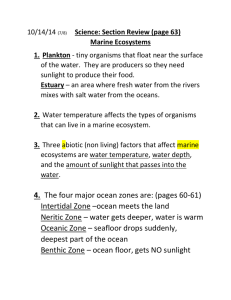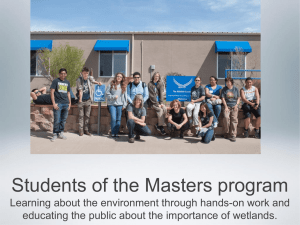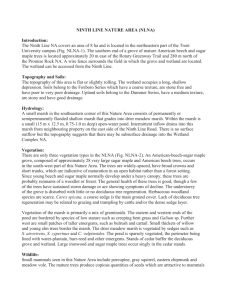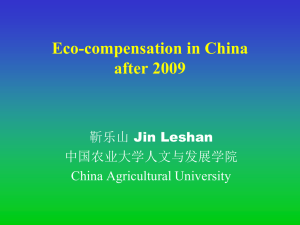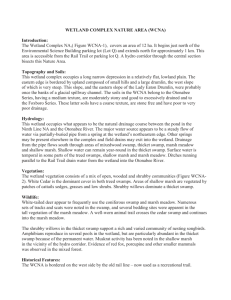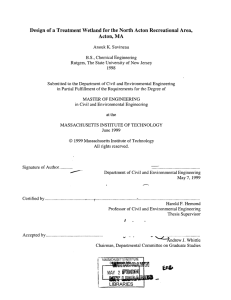archaeology centre wetland nature area (acwna)
advertisement
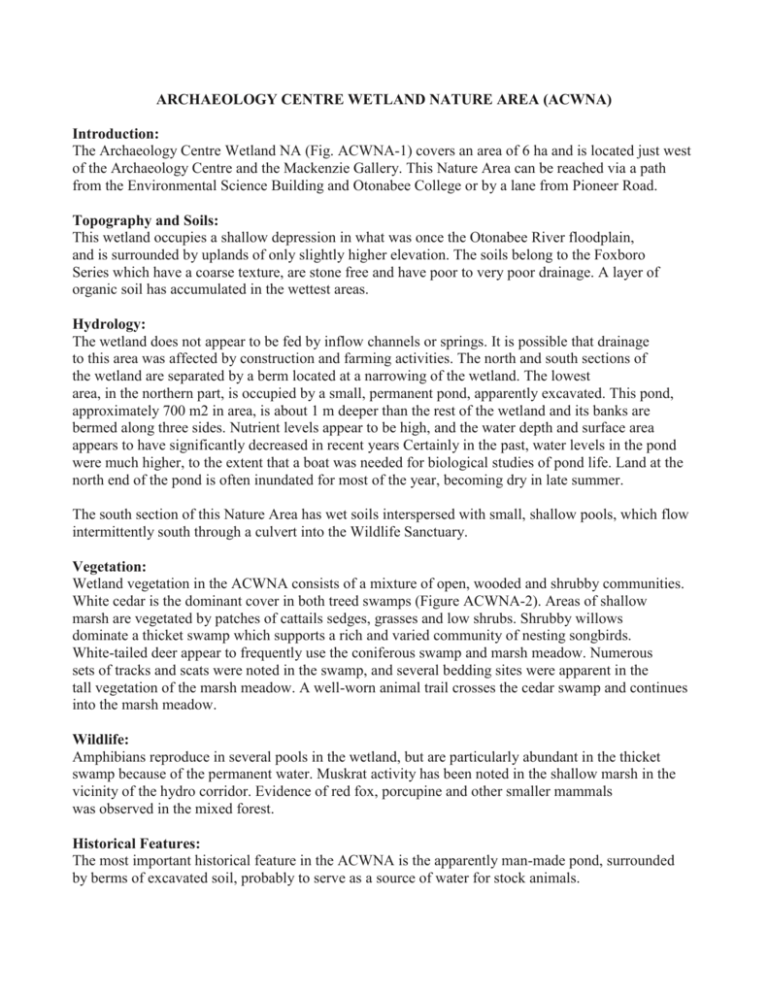
ARCHAEOLOGY CENTRE WETLAND NATURE AREA (ACWNA) Introduction: The Archaeology Centre Wetland NA (Fig. ACWNA-1) covers an area of 6 ha and is located just west of the Archaeology Centre and the Mackenzie Gallery. This Nature Area can be reached via a path from the Environmental Science Building and Otonabee College or by a lane from Pioneer Road. Topography and Soils: This wetland occupies a shallow depression in what was once the Otonabee River floodplain, and is surrounded by uplands of only slightly higher elevation. The soils belong to the Foxboro Series which have a coarse texture, are stone free and have poor to very poor drainage. A layer of organic soil has accumulated in the wettest areas. Hydrology: The wetland does not appear to be fed by inflow channels or springs. It is possible that drainage to this area was affected by construction and farming activities. The north and south sections of the wetland are separated by a berm located at a narrowing of the wetland. The lowest area, in the northern part, is occupied by a small, permanent pond, apparently excavated. This pond, approximately 700 m2 in area, is about 1 m deeper than the rest of the wetland and its banks are bermed along three sides. Nutrient levels appear to be high, and the water depth and surface area appears to have significantly decreased in recent years Certainly in the past, water levels in the pond were much higher, to the extent that a boat was needed for biological studies of pond life. Land at the north end of the pond is often inundated for most of the year, becoming dry in late summer. The south section of this Nature Area has wet soils interspersed with small, shallow pools, which flow intermittently south through a culvert into the Wildlife Sanctuary. Vegetation: Wetland vegetation in the ACWNA consists of a mixture of open, wooded and shrubby communities. White cedar is the dominant cover in both treed swamps (Figure ACWNA-2). Areas of shallow marsh are vegetated by patches of cattails sedges, grasses and low shrubs. Shrubby willows dominate a thicket swamp which supports a rich and varied community of nesting songbirds. White-tailed deer appear to frequently use the coniferous swamp and marsh meadow. Numerous sets of tracks and scats were noted in the swamp, and several bedding sites were apparent in the tall vegetation of the marsh meadow. A well-worn animal trail crosses the cedar swamp and continues into the marsh meadow. Wildlife: Amphibians reproduce in several pools in the wetland, but are particularly abundant in the thicket swamp because of the permanent water. Muskrat activity has been noted in the shallow marsh in the vicinity of the hydro corridor. Evidence of red fox, porcupine and other smaller mammals was observed in the mixed forest. Historical Features: The most important historical feature in the ACWNA is the apparently man-made pond, surrounded by berms of excavated soil, probably to serve as a source of water for stock animals. There is the foundation of a log-barn that burned down in 1969 (R. Jones pers. comm.) and a silo foundation close by at the end of the drumlin on which Otonabee College was constructed. Mackenzie House was the dwelling for the farm. Significant Features: The most significant feature in this Nature Area is the pond and it’s diversity of plants and wildlife. Land Use: Teaching and Research The closeness of the ACWNA to the Environmental Sciences Building makes it important for undergraduate field classes and both undergraduate and graduate research. Adjacent Land Use: The ACWNA is surrounded on three sides by the campus core and endowment lands while to the south, across Pioneer Road is the Wildlife Sanctuary NA. Mackenzie House, the Archaeology Centre, a parking lot, and a paved path are all located near the eastern edge of the wetland. Pioneer Road and the Wildlife Sanctuary border to the south. Ecological Integrity There is concern that: • drainage into the pond may have been interfered with as the pond was once several feet deep. • cattail invasion of the pond is occurring because of the substantial decline in the depth of water in the pond. Transpiration by these emergent plants is exacerbating the declining water levels. • in the absence of a boardwalk, the wet soils and herbaceous species will be damaged unless groups using the ACWNA are small. • the ACWNA is being invaded by European buckthorn and purple loosestrife which have the ability to out-compete native species. Figure ACWNA- 1: Contour Map of the Archaeology Centre Wetland Nature Area, Symons Campus, Trent University, Peterborough, Ontario. Figure ACWNA- 2: Vegetation Types in the Archaeology Centre Wetland Nature Area, Symons Campus, Trent University, Peterborough, Ontario. Figure ACWNA-3: Vegetation Communities in the Archaeology Centre Wetland Nature Area, Symons Campus, Trent University, Peterborough, Ontario.
